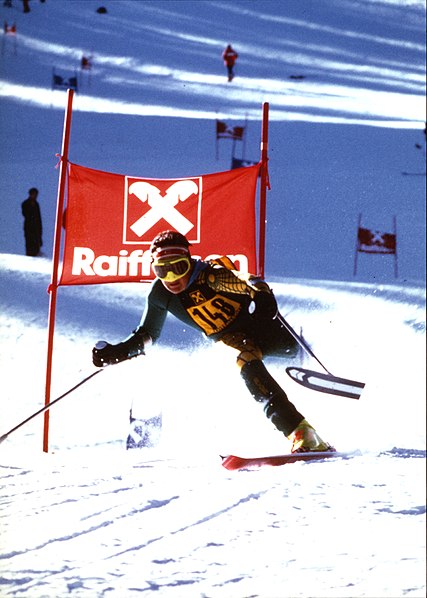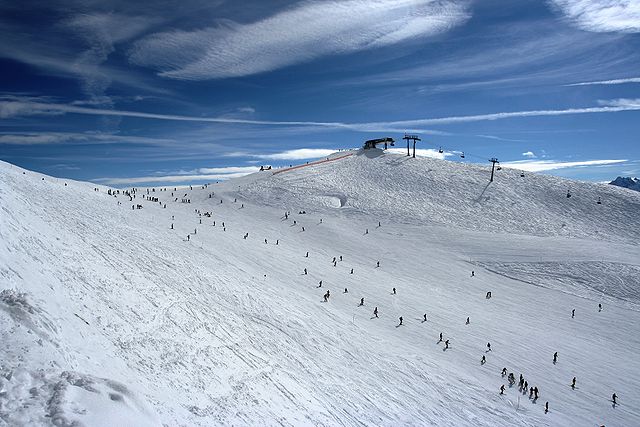Paralympic alpine skiing is an adaptation of alpine skiing for athletes with a disability. The sport evolved from the efforts of disabled veterans in Germany and Austria during and after the Second World War. The sport is governed by the International Paralympic Committee Sports Committee. The primary equipment used includes outrigger skis, sit-skis, and mono-skis. Para-alpine skiing disciplines include the downhill, super-G, giant slalom, slalom, super combined, and snowboard.
Talan Skeels-Piggins from Great Britain in the first run for the men's slalom (sitting), at the Winter Paralympics 2010 in Vancouver, Canada.
Australian Paralympian Michael Milton at the 1988 Innsbruck Winter Games.
A disabled veteran uses a sit ski at Vail, Colorado.
A Norwegian skier in the downhill at the 1988 Winter Paralympics
Alpine skiing, or downhill skiing, is the pastime of sliding down snow-covered slopes on skis with fixed-heel bindings, unlike other types of skiing, which use skis with free-heel bindings. Whether for recreation or for sport, it is typically practiced at ski resorts, which provide such services as ski lifts, artificial snow making, snow grooming, restaurants, and ski patrol.
Alpine skiers
Alpine ski slope in the Zillertal valley, Austria
Alpine ski slopes in San Carlos de Bariloche (Argentina)
Four groups of different ski types, from left to right: 1. Non-sidecut: cross-country, telemark and mountaineering 2. Parabolic 3. Twin-tip 4. Powder








